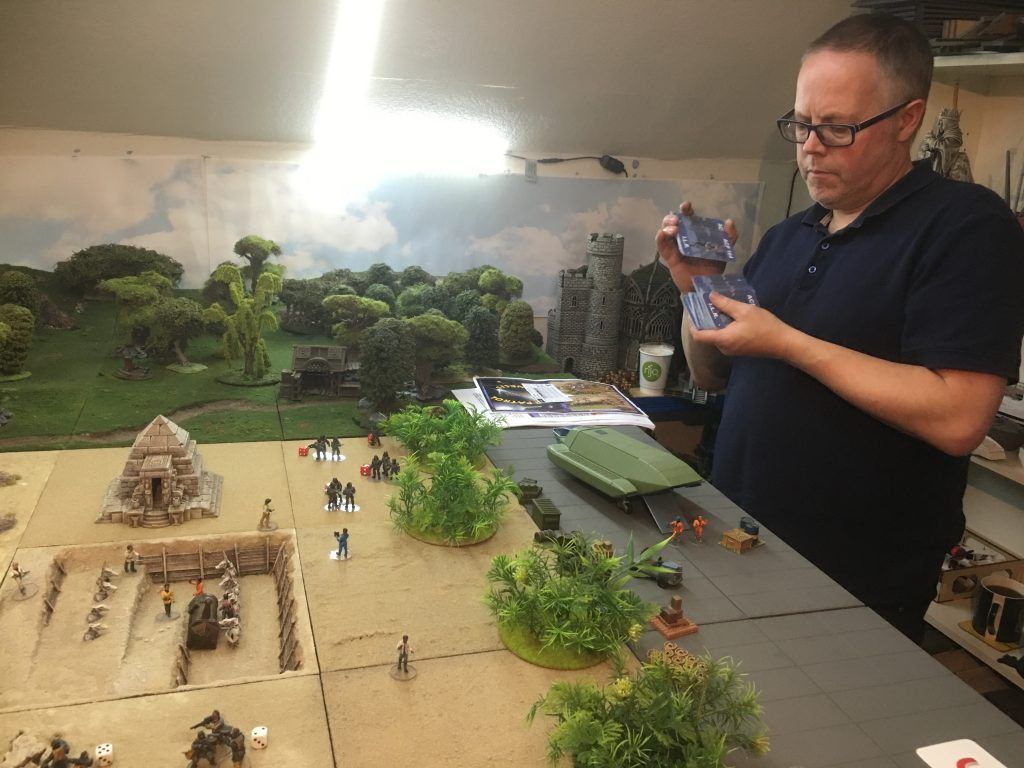
Born in 1965, I have been a life long fan of Star Trek. Other Sci-Fi has come along over the last 55 years, and much of that has been great too, but Star Trek has always had a special place in my heart from the first shaky beginnings of The Origin Series, with polystyrene scenery and wooden dialogue through The Next Generation and Deep Space Nine to Discovery, Voyager and much else they all had a fascination and were full of social and political ground breaking ideas. Over the years, like many I have gamed in the Star Trek universe on many levels with great games like Starfleet Battles, Federation Commander, Star Trek Attack Wing, Prime Directive, Star Trek Adventures and many more. Four or five years ago I discovered a great set of Skirmish rules called Combat Patrol, developed by Buck Surdu for WW2 gaming. The rules made a lot of sense, Buck is a retired infantry officer and he knows his stuff. Rather than having lots of table and dice rolls to look up and cross reference, all of the detail of tactical interactions has been built into a very clever set of cards that are used to resolve shooting, movement, melee and morale, making for a fast and streamlined gaming experience. Combat Patrol’s base mechanisms were used in ACP164:The Albedo Miniatures Game and Feudal Patrol and have now now been distilled into Star Patrol:Genesis (Star Patrol) a free PDF vanilla set of rules that can be adapted for use in any sci-fi environment. The ‘Genesis’ bit alludes to the rules being the beginning. They do not contain anything that could be considered copyright of a particular franchise, but offer the tools or building blocks from which fans can define what ever troop types and weapons are part of the genre in which they wish to game.
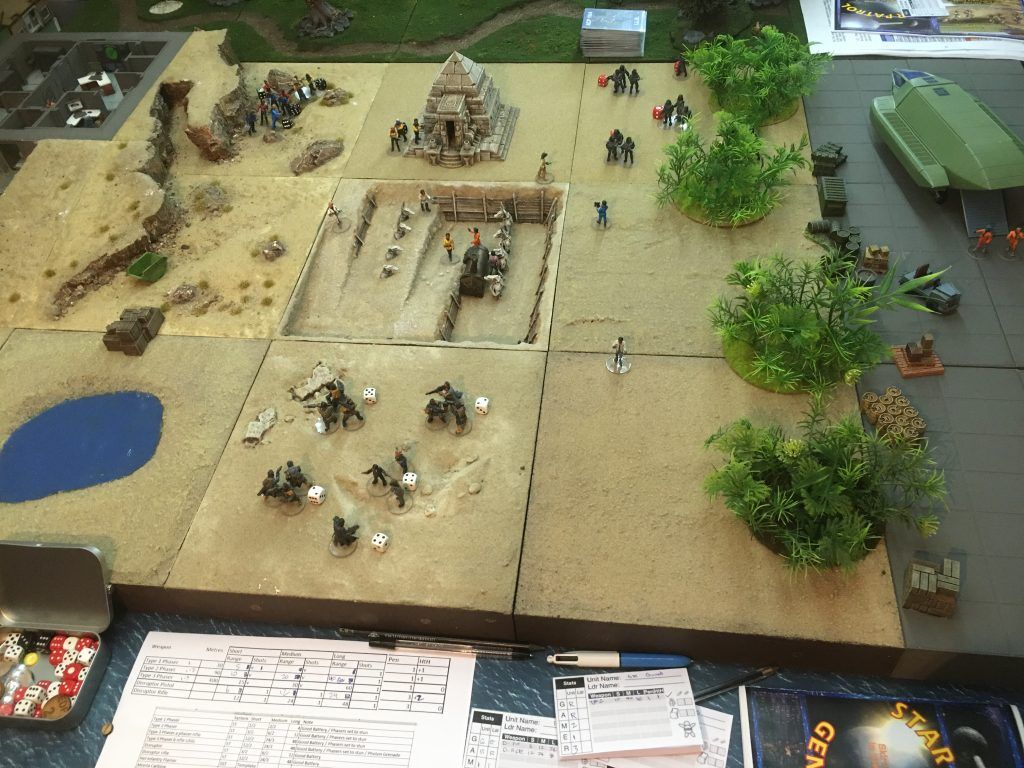
Last week I got together with my good friends Doug and John to work out the details of how we would play a Star Trek skirmish game using Star Patrol. The premise for the scenario was inspired by a recent Star Trek Role Playing adventure that we had recently enjoyed, although the protagonists have been changed.
The Star Fleet Crew are engaged in a routine follow-up on Federation science teams throughout the area known as the
Tironian Star Cluster, on the edge of the Alpha Quadrant, just outside of the Federation borders toward Galactic Center.
During the trip, the characters receive a coded message from the science station at Epsilon Alpha III, informing them of an
imminent discovery. Epsilon Alpha III is arid. The mission is to aid a Federation archaeological team on the verge of making a huge discovery, in the ruins of the advanced civilization that once lived on the planet. The Science team have discovered a previously unknown power source among the ruins. Due to an ion storm a Transporter lock is not possible so an away team consisting of a mix of Command and Science Division personnel together with a security detachment are dispatched by shuttle craft. Unfortunately the message was intercepted and decoded by a Ferenghi Pirate ship and a Klingon Bird of Prey who also dispatch teams to attempt to either seize the artefact to sell to the highest bidder or deny it to the Federation.
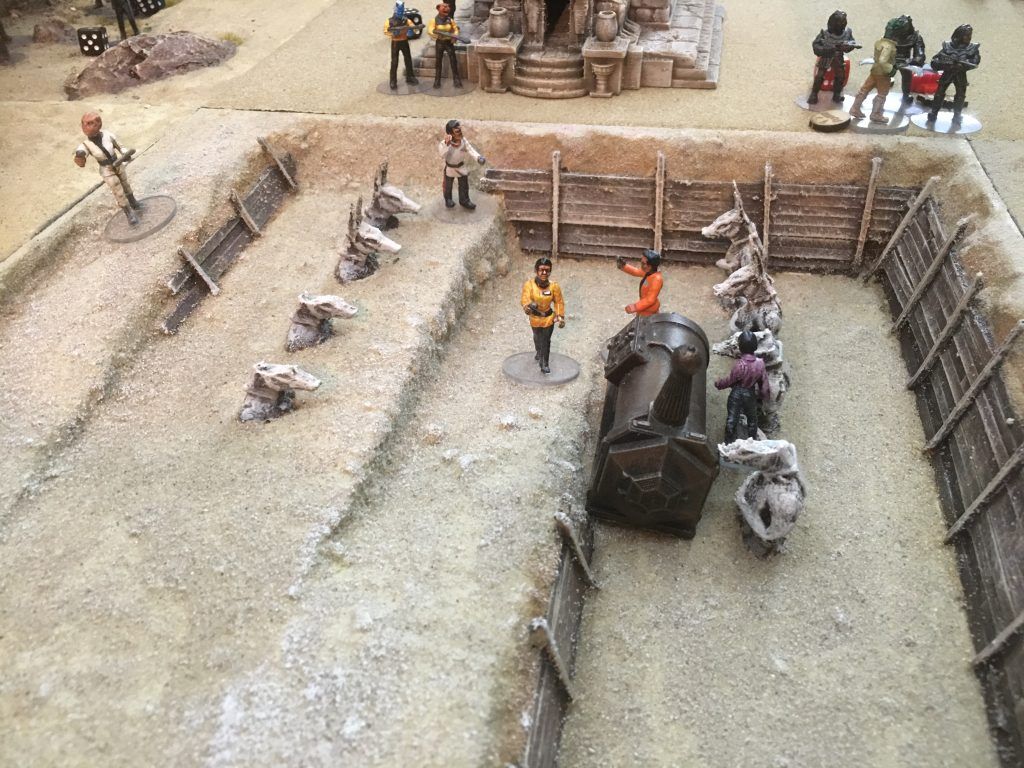
One of the great things about Star Trek gaming is that the scenario could be set just about anywhere so a perfect excuse to use my archaeological dig site terrain together with a landing strip and an underground bunker. There were locations assigned within the dig site and the bunker where data about the power source could be extracted by science team personnel. To gather the information the officer needed to activate next to a data point (like the equipment in the dig site) and draw an action card, and refer to the Hit Indicator Section, which has bullet holes that represent hits and misses. Cards have from 0-6 hits plus an ‘out of ammo’ result. Four hits were needed to be successful, hits carried over from one activation to the next so if 2 hits were gained initially a further 2 would solve the problem, but an ‘out of ammo’ represented a technical set back meaning that the character needed to start again from zero.
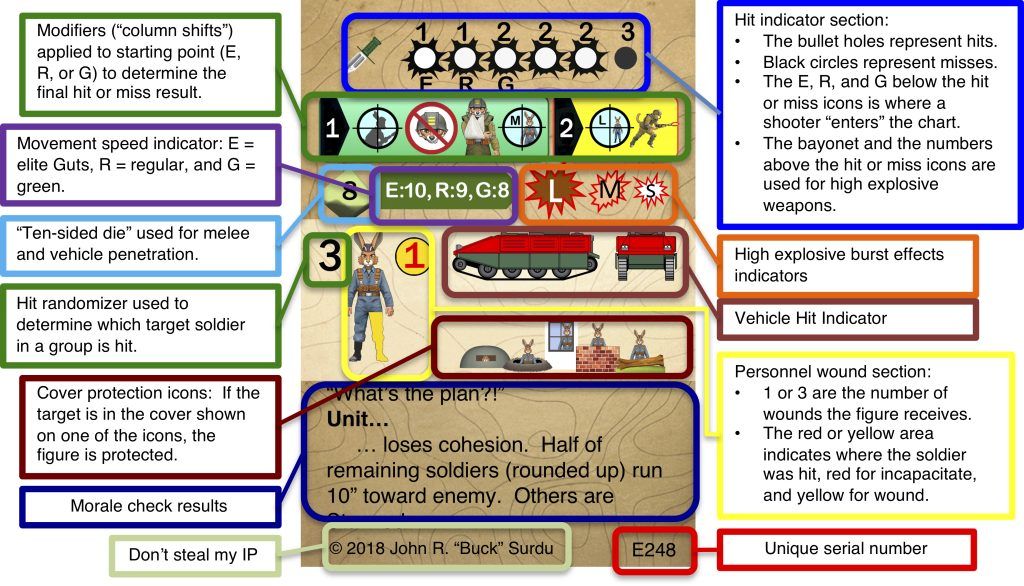
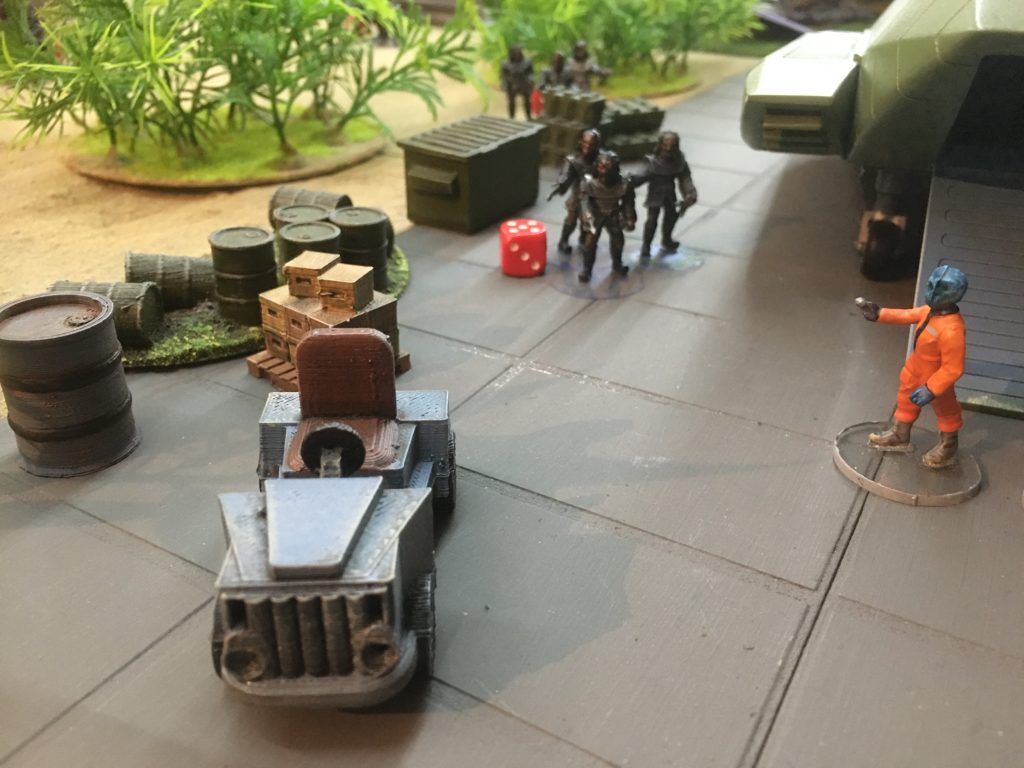
Points were also gained for rescuing or capturing for interrogation or negotiating a trade deal with one of the scientists from the dig and escorting them back to the shuttle or teleport enhancer. The civilian scientists were scattered around there office bunker and the dig site as were there security contractors who responded to any faction entering there terrain tile. This led to a suitably chaotic three way engagement with lots of potential objectives.
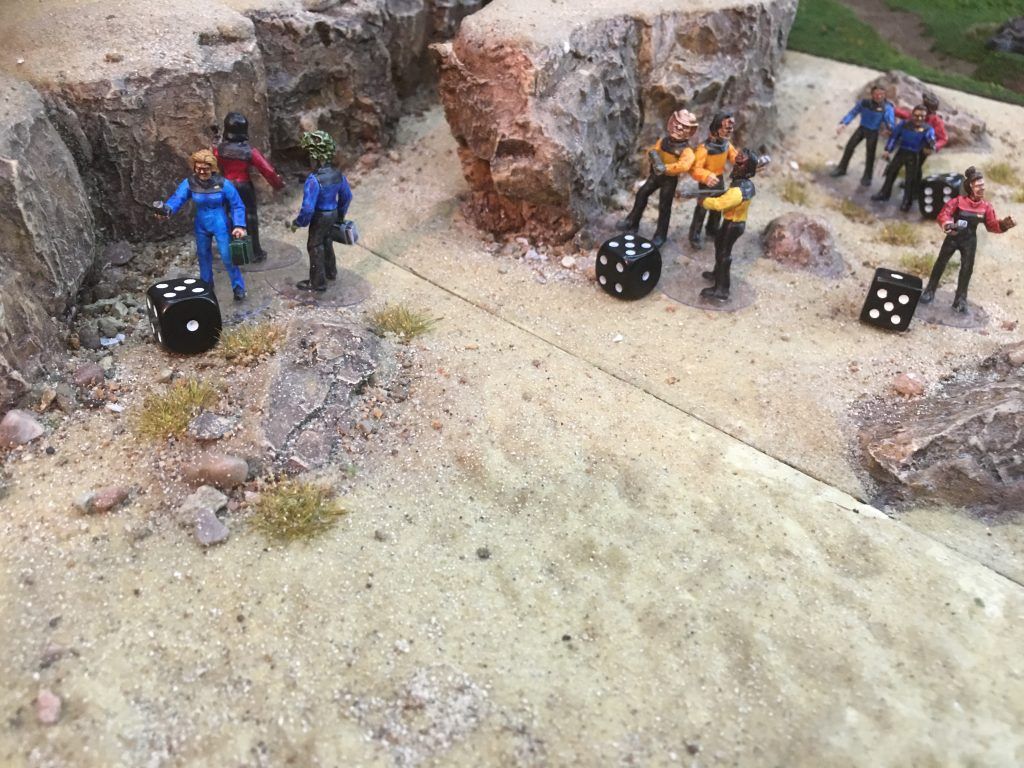
Star Fleet teams prepare to spread out to investigate with much scanning for life forms. The dice placed by the groups of figures are activation dice. At the start of each turn a dice is rolled for each individual leader, or leader within a team. This is the teams activation number for the turn. An activation deck is used that has a black and a red 1-6 card plus a turn over card. When a card is turned, all units that have an activation dice that matches may activate.
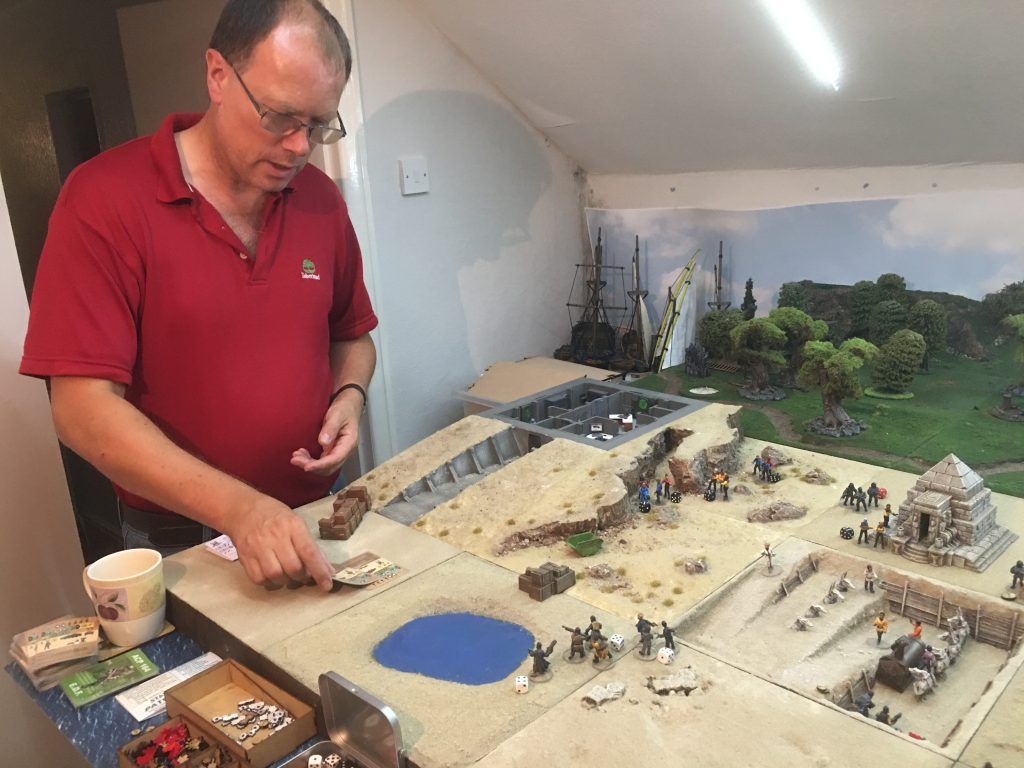
Doug is using his action deck to resolve some shooting. Troops are classified as either Green, Regular or Elite for shooting. This determines where you start on the shooting resolution part of the card. Shifts are then used to reflect the tactical situation, so for example if your target was at medium range you would shift one, if your target was at long range you would shift two. Looking at the card above, if our shooters were regular they would start in position two, shift two for a long range target needing a hit token in the fourth position for success, which the card had. Once you’d worked out if a hit had been scored a second card would be turned to determine who in target group had been hit, if cover would save them and the severity of there injury.
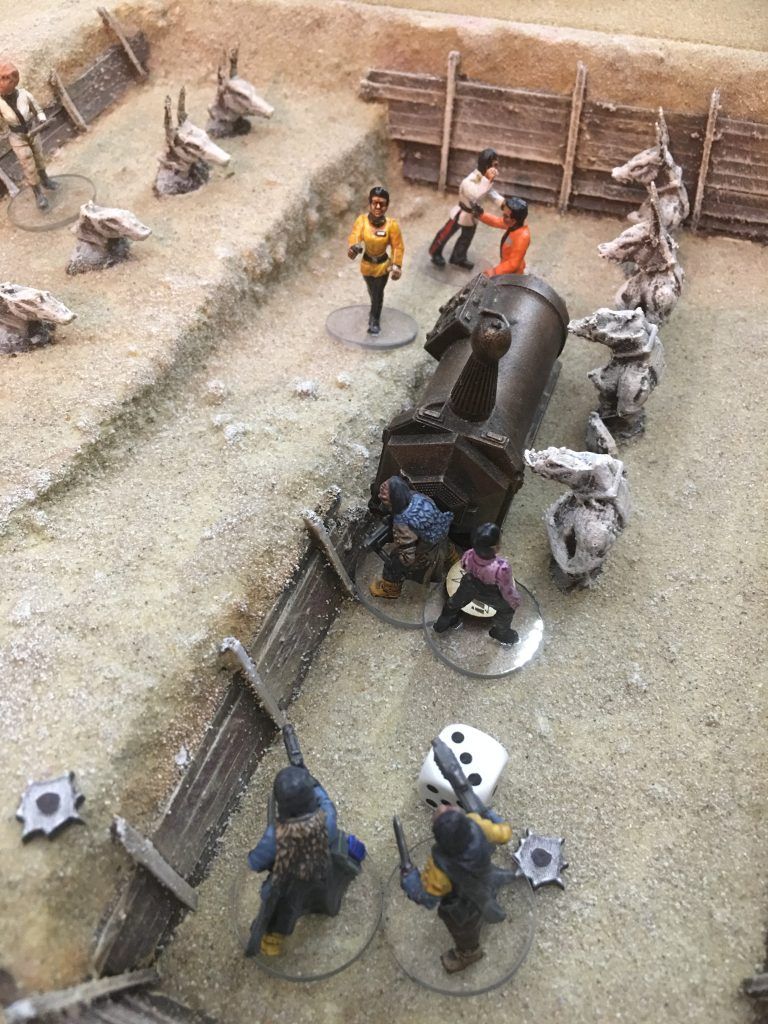
I’d not got a unit of Ferenghi Pirates (yet), so these Klingon Pirates are standing in for them! The pirate by the machinery has captured a scientist while his two comrades are using cover and returning fire.
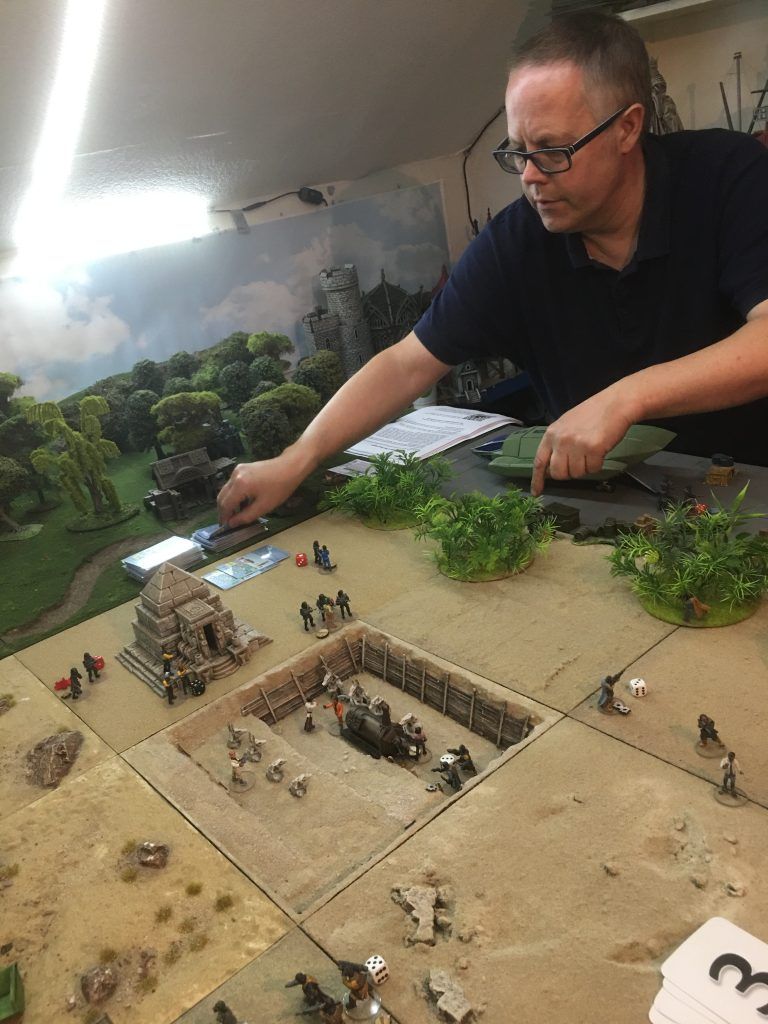
John was playing the Klingons. A ‘3’ is showing on the activation card, so he is activating his units that have a ‘3’ dice next to them.
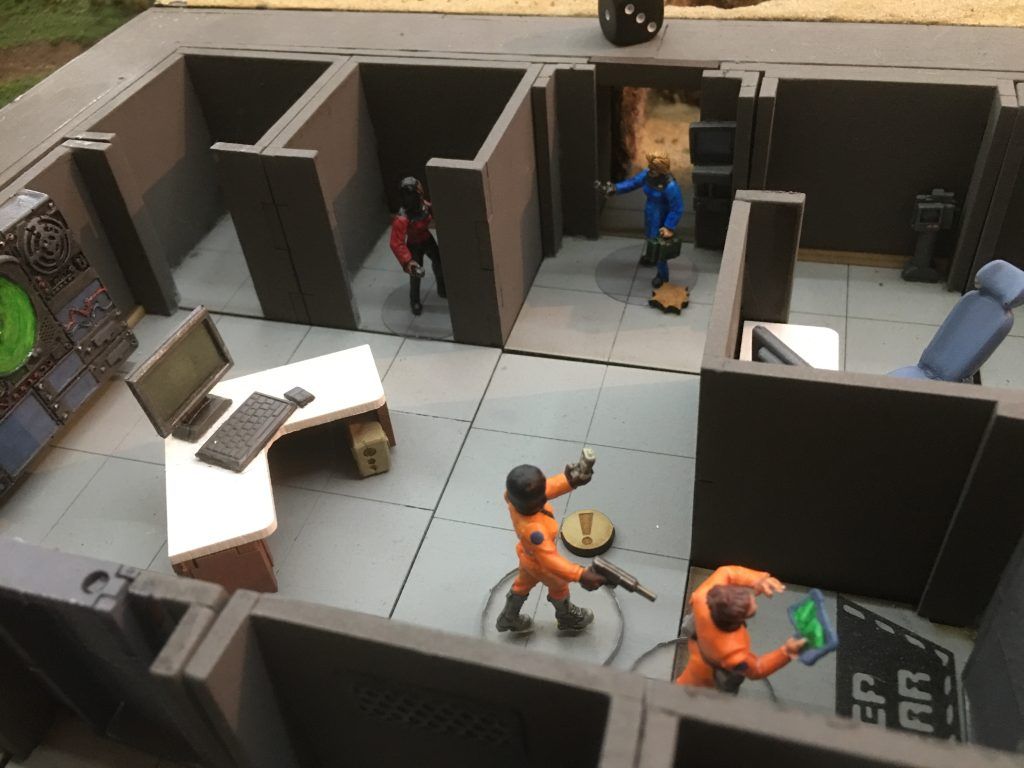
Doug was the Star Fleet player. He had made it into the scientists office, the security contractors have opened fire. The desktop PC is the data access point.

These are the stats that we used for the game. These together with the Star Patrol:Genesis rules, that can be downloaded by clicking here are all that you need to do some Star Trek themed Skirmish Gaming. Our thoughts were that Star Fleet Personnel were very well trained and had access to the best shooting technology. Phasers have in built targeting AI that makes them very accurate. The Ferenghi are not as well trained at shooting and are armed with Disruptors which are less accurate, have less range, but are more vicious if they hit. They have the lowest possible melee value as they do not like to get in a scrap, but they have high Endurance which reflects that they are very good at hiding which gives them an edge on survivability. They are very aware of there environment so have a high reaction score and we gave them a special rule to ignore ‘out of ammo’ results as we thought that they would have traded all the phaser and disruptor batteries and kept the best ones for themselves! The Klingons are also excellent shots and are also tougher in melee. The civilian scientists and guards were given an Endurance of 1 as we decided that they would surrender if wounded in any way.

Star Trek Weapons: We had a lot of thought and debate about this and checked how the various weapons were used in various series and came to the following conclusions.
The Type 1 Phaser is a small easily concealed device with limited battery life that is really only useful for self defence within close range in a ship or office, however it does still have sophisticated AI targeting so we set range to 5″ but all shots counting as short range.
The Type 2 Phaser is the most widely used weapon for Star Fleet and is the equivalent of an Assault Rifle in it’s effectiveness. It can be set to fire individual shots or a wide beam, and its power setting can be adjusted from stun to burn through rock mode.
The Type 3 Phaser (Phaser Rifle) is the equivalent of a Squad Support Weapon.
All phasers can have there power cell removed and set to use as either a hand grenade or a satchel charge. If a phaser is set for wide dispersal it can affect multiple targets, but each to hit draw takes a shift to the right, i.e. if you want to effect two targets both hits are at one shift, if you want to effect three targets all three are at two shifts to the right.
Disruptor Pistols and Rifles are less sophisticated than Phasers and are single shot weapons, however if they hit they are more powerful and do greater damage… you do not hear the bad guy’s checking ‘Disruptors on Stun’!

All of the miniatures used are from the Sally 4th Landing Party range or conversions using parts from Sally 4th Conversion Ranges
The Space Patrol: Genesis rules can be downloaded for free from here.

0 Comments